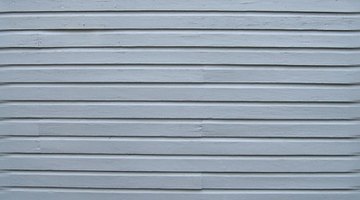Tips on Metal Siding Installation
Metal siding can be made from steel, aluminum, copper or zinc and is a very cost-effective way to improve the value of a property. Metal siding is more costly than vinyl siding, but much less than wood or brick. The installation of metal siding is simple, but there are some things that need to be considered.

Overlap
Installing metal sheeting requires the overlap of materials. The metal sheeting is made to be installed this way, and because of that leaves some room for water leakage. It is best to run a line of sealant down that seam where the joints overlap to ensure that the sheet metal is waterproofed at the joints.
Starter Strip
Sheet metal siding comes with a starter strip that runs along the bottom of the building. The siding is placed inside this starter strip to keep it straight throughout the run along the building. It is important when installing this starter strip that it be perfectly straight. This can easily be done by marking the building with a chalk line from end to end, using a level to make sure the chalk line is straight.
Orientation
Metal siding can be installed either horizontally or vertically. Both installation types are durable and hold up against the elements. It is best to use vertical siding on roofs, but it does not matter whether vertical or horizontal siding is used on the side of the building. The framing of the building will determine which type of siding to use.
Fasteners
It is best to use screws with plastic washers when installing metal siding. Using nails can created a problem in the future. If corrections or repairs need to be made during installation, it is easier to unscrew the siding than to attempt to pry it away with a hammer. An installer can create more damage to the material when he attempts to remove a nail than if he just removes a screw.
References
Resources
Writer Bio
Horacio Garcia has been writing since 1979, beginning his career as the spokesperson for Trinity Broadcast Network. Within 10 years Garcia was being called upon to write speeches and scripts for several state and federal congressmen, local broadcast networks and publications such as "Readers Digest." He received his bachelor's degree in public relations from Argosy University.
Photo Credits
- siding image by Psycience from Fotolia.com
- siding image by Psycience from Fotolia.com
More Articles



